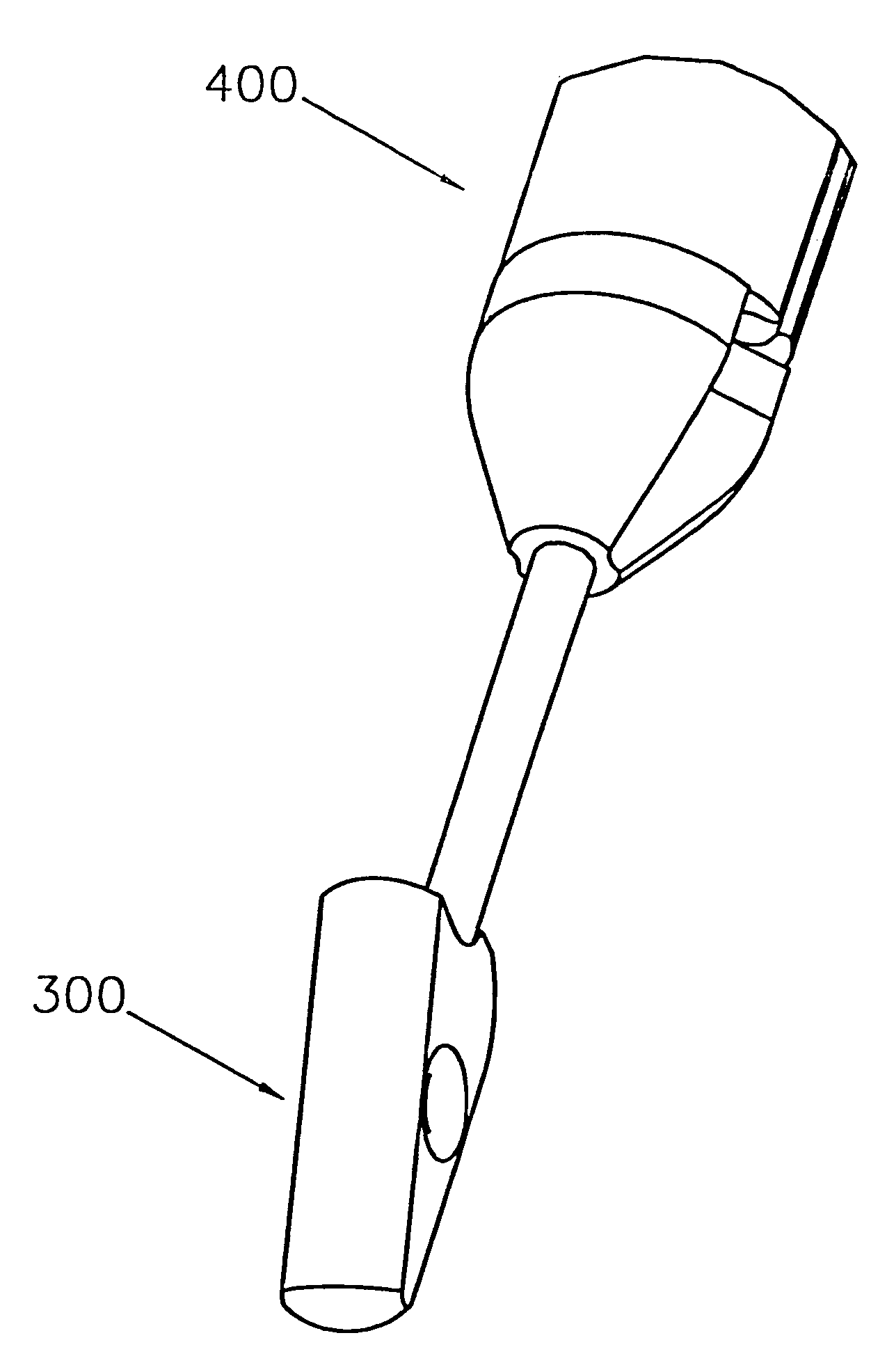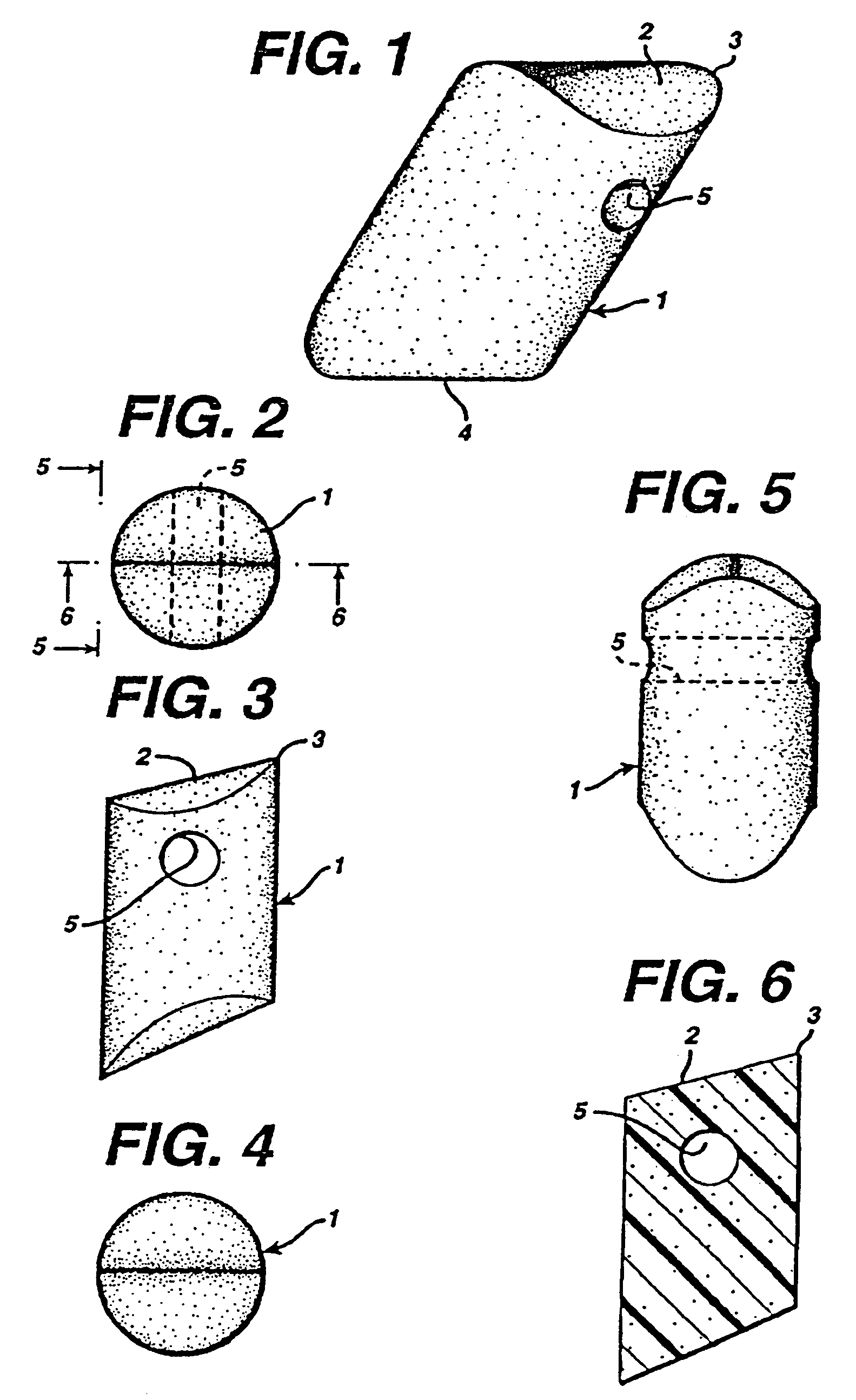Wedge shaped suture anchor and method of implantation
a suture anchor and wedge-shaped technology, applied in the field of surgical implements, can solve the problems of increasing the load and stress placed on, generating numerous bone tunnels, and joint injuries with corresponding damage to associated soft tissue, so as to improve the rotation of the device and the effect of better dispersing the force acting on the devi
- Summary
- Abstract
- Description
- Claims
- Application Information
AI Technical Summary
Benefits of technology
Problems solved by technology
Method used
Image
Examples
Embodiment Construction
[0106]A first aspect of a suture anchor according to the present invention is a unitized suture anchor, particularly as shown in FIG. 1. The first embodiment of the invention will now be described with reference to the Figures. The suture anchor 1 has a first abutment end 2 and a second abutment end 3. The suture anchor has a substantially cylindrical cross-section as shown in FIG. 2 and the cylindrical longitudinal surface forms with the abutment end 2 a corner 4. The diameter of the suture anchor is sized smaller than the bore hole or opening in the bone receiving the suture anchor. This permits passage of the suture end(s) out of the opening. A suture opening 5 is defined by the body of the suture anchor 1. In an alternative embodiment shown in FIG. 3 the first abutment end 2 and second abutment end 3 are slightly tapered to a point or edge. This is due to the extruding process of formation as will be described below. The suture opening 5 is formed transverse to the longitudinal ...
PUM
 Login to View More
Login to View More Abstract
Description
Claims
Application Information
 Login to View More
Login to View More - R&D
- Intellectual Property
- Life Sciences
- Materials
- Tech Scout
- Unparalleled Data Quality
- Higher Quality Content
- 60% Fewer Hallucinations
Browse by: Latest US Patents, China's latest patents, Technical Efficacy Thesaurus, Application Domain, Technology Topic, Popular Technical Reports.
© 2025 PatSnap. All rights reserved.Legal|Privacy policy|Modern Slavery Act Transparency Statement|Sitemap|About US| Contact US: help@patsnap.com



